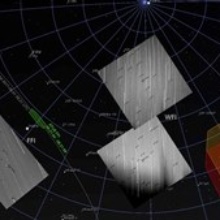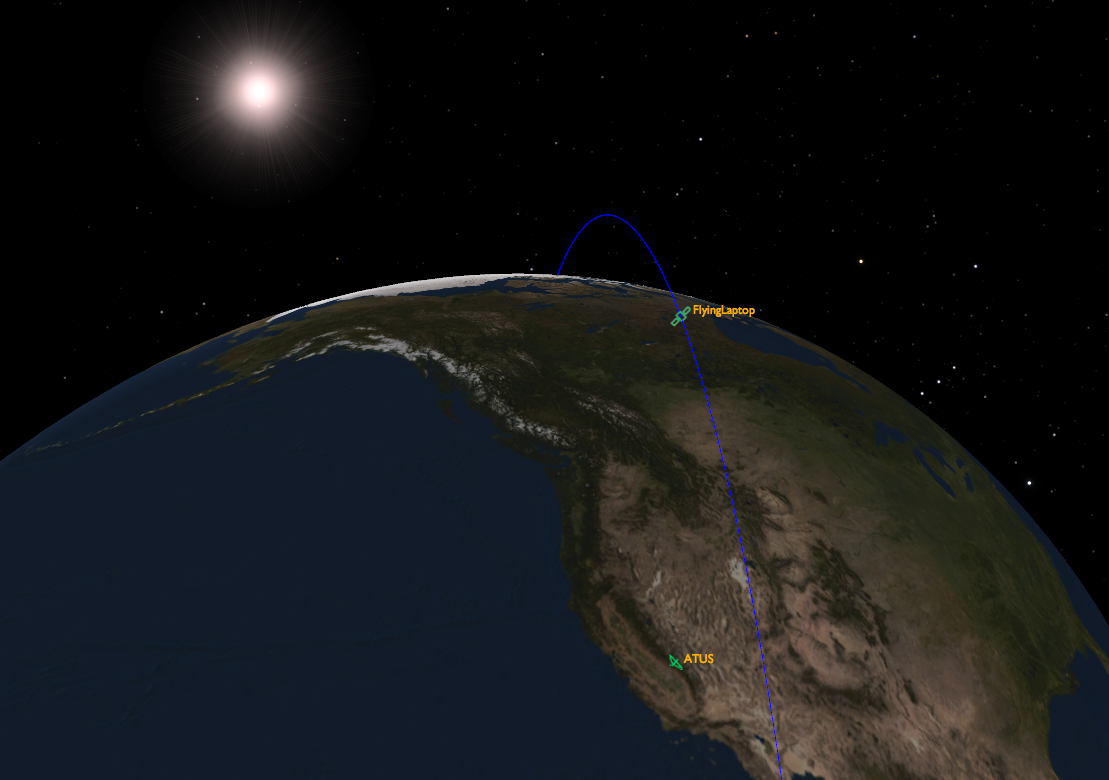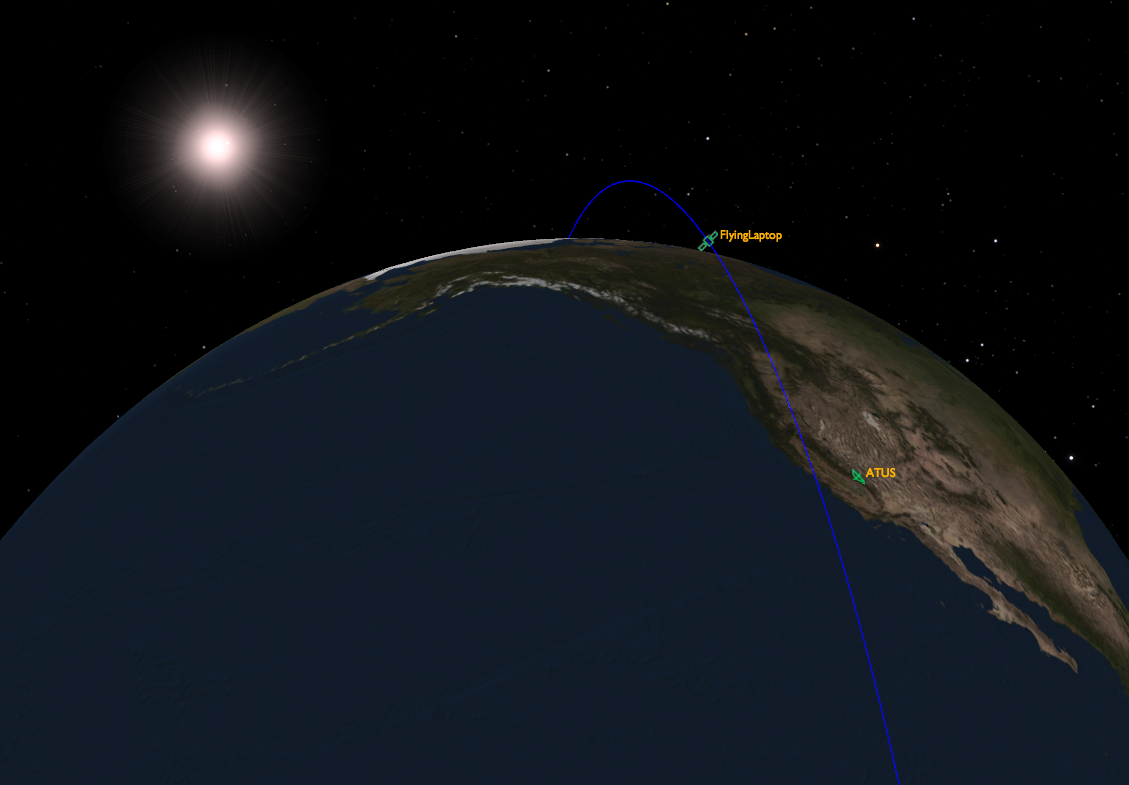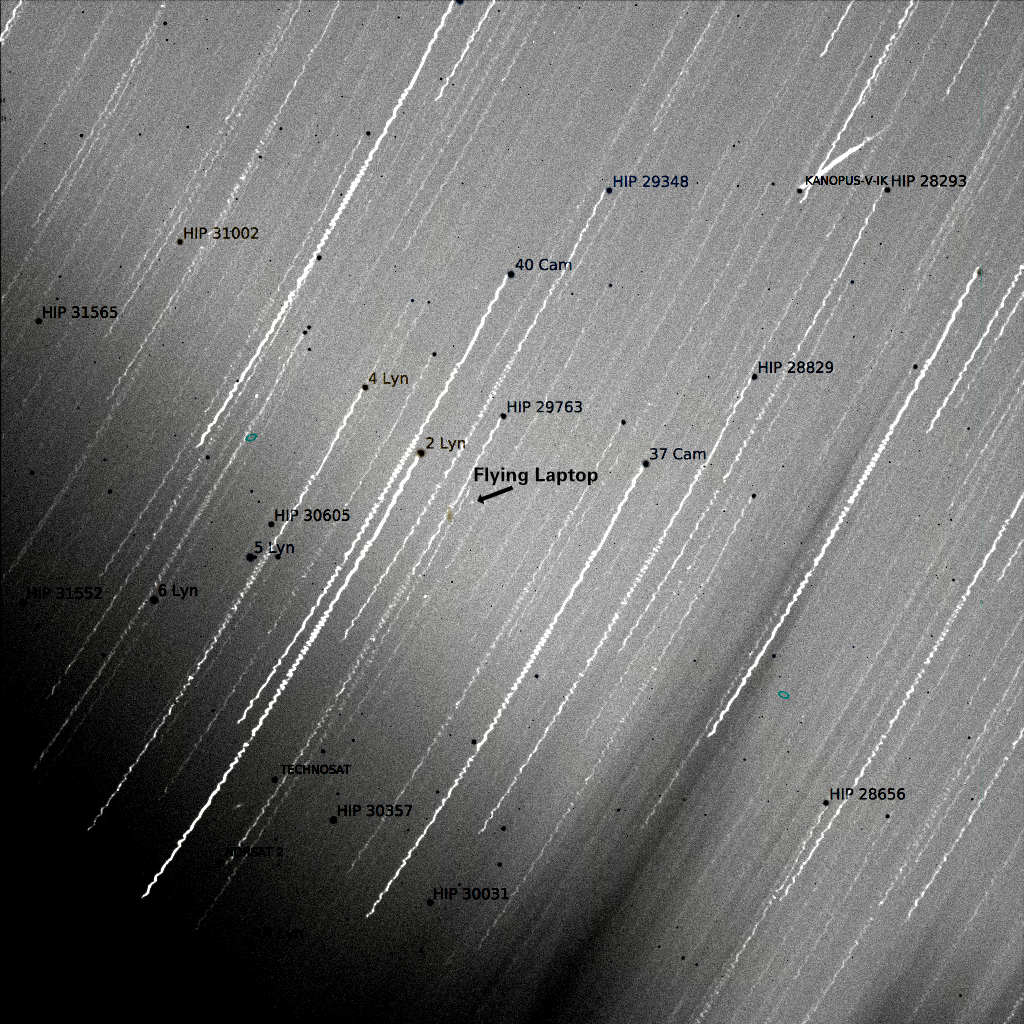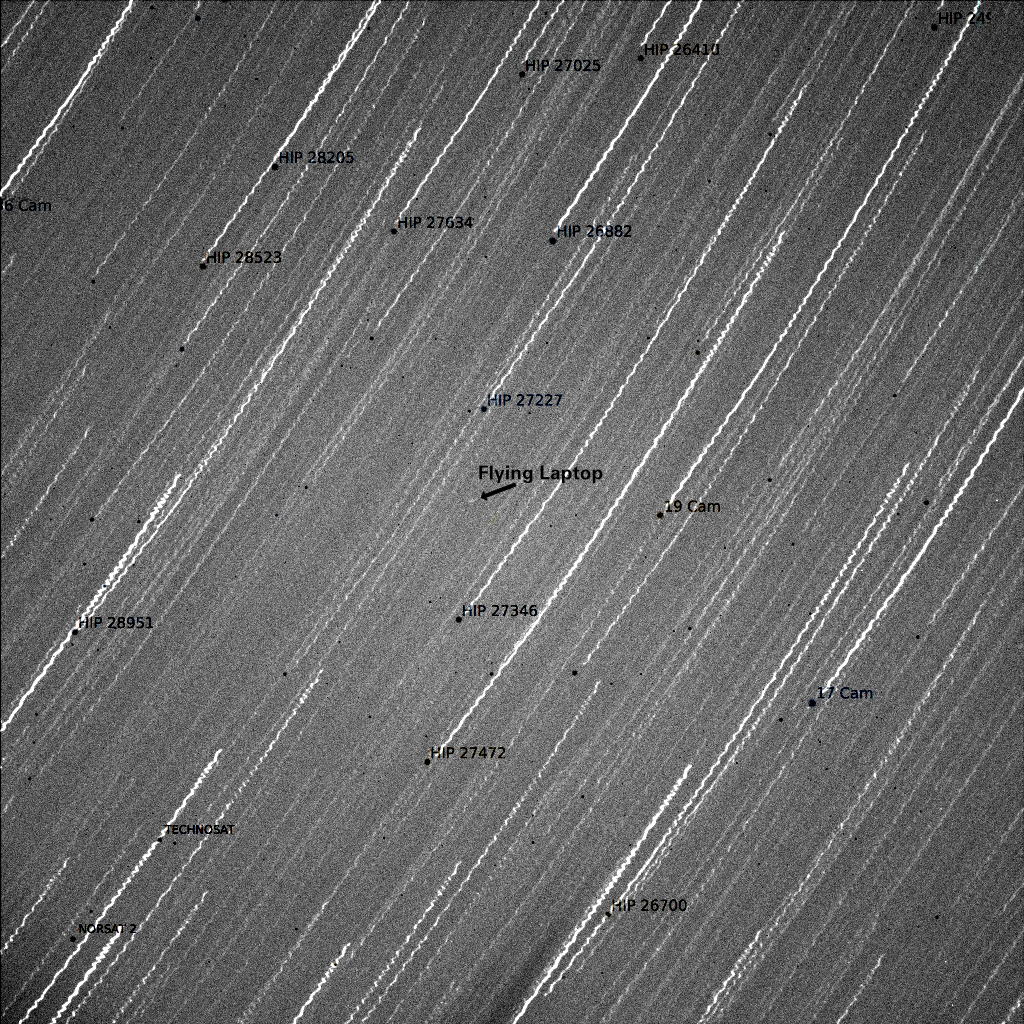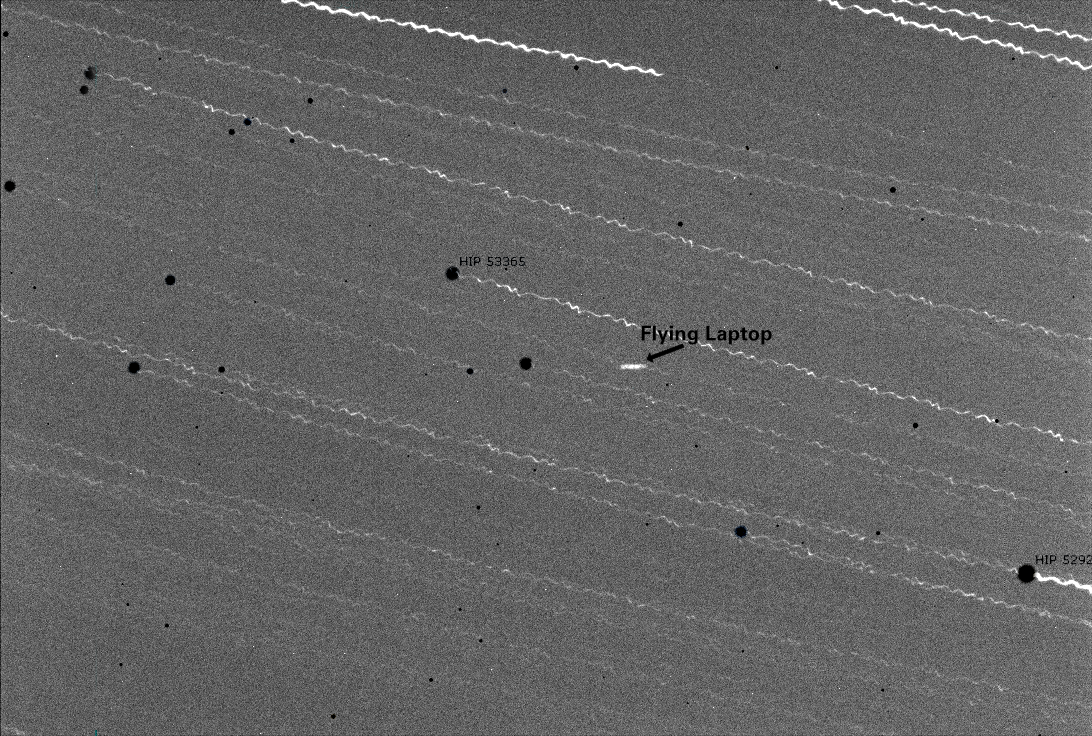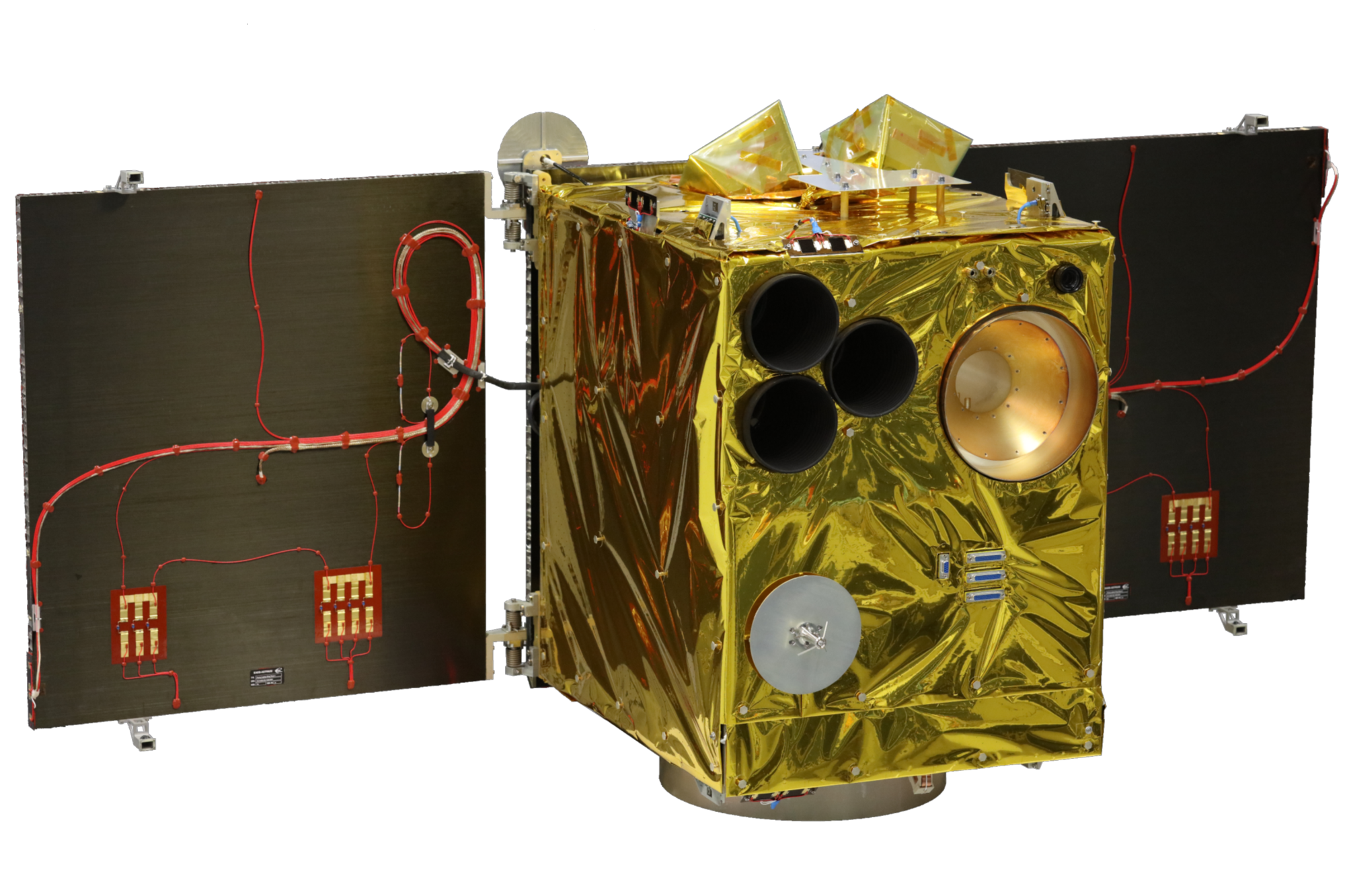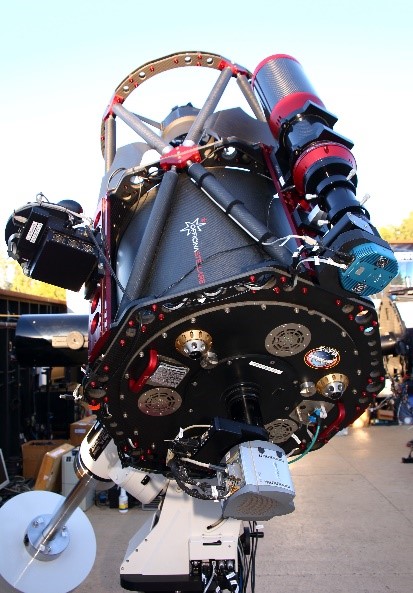Flying Laptop (FLP), the University of Stuttgart's first small satellite, has been orbiting the Earth at a height of 600 km since mid-July 2017. At a speed of about 28000 km/h, each orbit takes only 96 minutes. On Earth, in California's Sierra Nevada, the remote controlled Astronomical Telescope of the University of Stuttgart (ATUS) moves beneath the sky approximately 26000 km/h more slowly. Occasionally, these two exceptional education platforms of the University of Stuttgart cross paths. Recently, Karsten Schindler of the German SOFIA Institute (DSI) took the opportunity to observe Flying Laptop with ATUS: twice on July 28th for 30 seconds each with the Wide Field Imager (WFI) and once more on August 1st for 15 seconds with the Fine Field Imager (FFI).
|
Image 1: Depiction of Flying Laptop's pass on July 28th (Copyright: Flying Laptop Team, University of Stuttgart) |
|
Image 2: Depiction of Flying Laptop's pass on August 1st (Copyright: Flying Laptop Team, University of Stuttgart) |
Tracking is a Challenge
An especially difficult part of the observation of Flying Laptop was the telescope's tracking, or its compensation for the different speeds at which the Earth (and therefore ATUS) and Flying Laptop are moving. This challenge arose from the fact that the existing algorithm is optimized to track stars, whose perceived movement around the Earth is quite slow as compared to Flying Laptop. Nonetheless, Flying Laptop can be seen as a small dot on the WFI images.
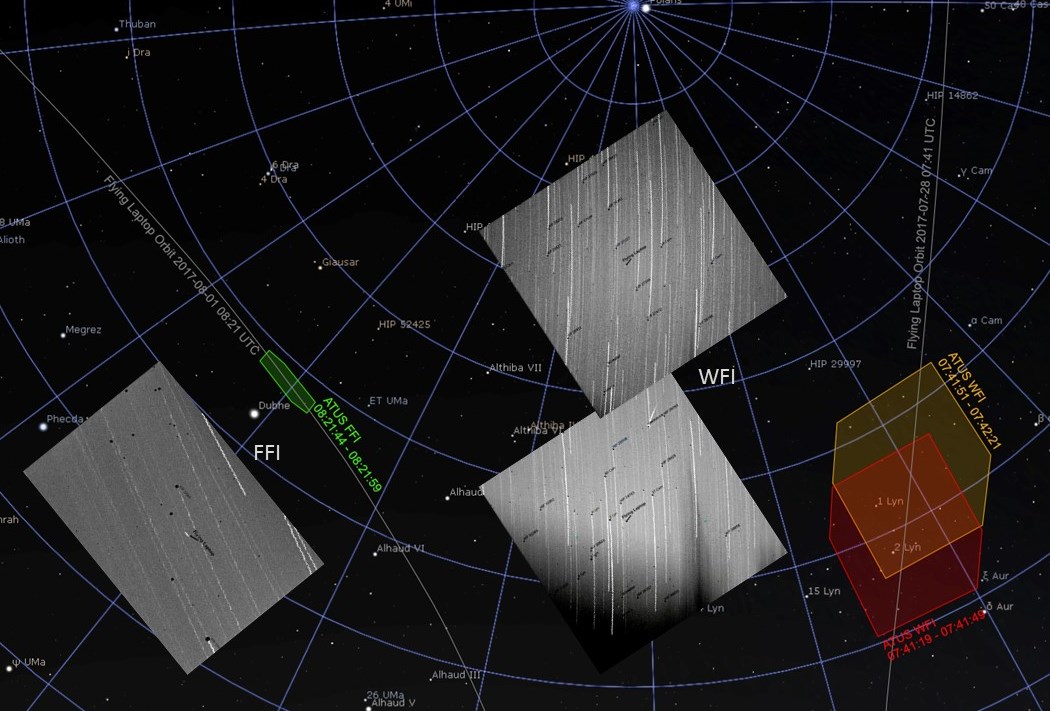
|
|
Image 3: Section of the sky with Flying Laptop's path on July 28th and August 1st. The satellite passed over the observatory from north to south. It was, however, only observable very close to the northern horizon, as it moved into the Earth's shadow at a height of about 18 degrees. The three images from the WFI and FFI (in more detail below) have been added to show their correct location in the sky. In these images, Flying Laptop is seen as a central point while the stars swipe across the image. (Copyright: DSI, University of Stuttgart) |
|
Image 4: The first WFI image of Flying Laptop from July 28th, 2017, shown on the bottom right in image 3 (Copyright: DSI, University of Stuttgart) |
|
Image 5: The second WFI image of Flying Laptop from July 28th, 2017, shown on the top right in image 3 (Copyright: DSI, University of Stuttgart) |
|
Image 6: The FFI image of Flying Laptop from Agust 1st, 2017, shown on the far left in image 3 (Copyright: DSI, University of Stuttgart) |
Small Satellite for Education, Earth Observation, and the Verification of New Technologies
| In recent years, doctoral candidates and students have developed, built, and tested the Flying Laptop satellite at the Institute for Space Systems. Through this process, the Flying Laptop satellite allowed students and doctoral candidates to put theory into practice and gather valuable experience. The infrastructure required for the project, like the thermal vacuum chamber, the satellite integration room, a simulation environment, an optics laboratory, and the ground station were developed through numerous doctoral disserations as well as diplom, studien, master, and bachelor theses at the University of Stuttgart. The satellite has now begun its work in orbit, where it takes multispectral photos for the evaluation of vegetation, receives ship signals, and tests a variety of new technologies. Flying Laptop's operation, which is planned to last 2 years, is run and monitored by doctoral candidates and students in the University of Stuttgart's satellite control center, which was also set up specifically for Flying Laptop's mission. |
Image 7: The small satellite Flying Laptop (Copyright: Jonas Keim, IRS, University of Stuttgart) |
Astronomical Observation from the Lecture Hall
ATUS is located in the Sierra Nevada in California and can be operated remotely. The nine-hour time difference between Germany and the West Coast of the U.S. allows professional astronomical observation to occur during the normal lecture period in Stuttgart. WIth ATUS, students of aerospace technology receive an introduction to astronomy, which is a common application of satellites. In addition, they learn to remotely control a device that is quite far away and is not directly accessible. Internships give students the chance to receive and analyse astronomical data. For example, students can plan an exoplanet observation and complete it shortly thereafter. Subsequently, they interpret the scientific data and then analyse their mission processes, which they will optimize for later application.
When required, ATUS can also be used for purposes other than the intended, like observing Flying Laptop as it moves across the sky. It remains to be seen whether Flying Laptop will return the favor and send an image of ATUS to the control room at the Institute of Space Systems.
|
Image 8: The remote-controlled ATUS telescope in California. The WFI and FFI guider cameras attached to the telescope barrel were used to observe Flying Laptop. (Copyright: DSI, University of Stuttgart) |
Links:
http://www.dsi.uni-stuttgart.de/forschung/atus.html
| Contact | Dörte Mehlert, Email: mehlert@dsi.uni.stuttgart.de; Tel.:0711 - 685-69632 |
|---|


